Palace Park - Arsenal
from Tsarskoe Selo in 1910
(note from Bob Atchison: The Arsenal remains, but also in quite a different state, from what it was originally. The building has gone through many transformations and remains in a ruined state today. Preston Dyar has taken all of the color pictures above.)
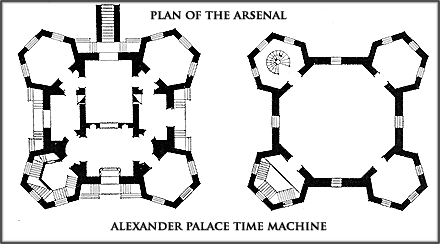
During the Emperor Paul's reign the pictures of "Mon Bijou" were sent to Gatchina.
Under the Emperor Alexander I, the architect Menelas entirely changed the external appearance of "Mon Bijou" by rebuilding it in the Anglo-Gothic style, thus making it a very close copy of a pavilion at Shrubshill in England, an engraving of which hangs in the Admiralty.
Rastrelli's creation is no longer recognizable, the character of the park, which surrounds it, is entirely changed, while even the name "Mon Bijou" has, given place to that of the "Arsenal". Instead of the well-clipped avenues that stretched from the stone-lined canal with four-bridges, an English Park has grown up; the canal has been filled with earth and the bridges have been destroyed. Until quite recently, the Arsenal contained a rich collection of armor which was the pride of the Emperor Nicholas Pavlovich. This collection consisted of more than 5,000 articles and was arranged in both stories of the building as well as on the staircase. At the present time the collection is in the Imperial Hermitage in St. Petersburg. The Emperor Nicholas Pavlovich began to collect arms in 1811, being quite a youth. The Grand Duke Michael Pavlovich left his collection to his August Brother, and the Emperor Alexander II completed the collection. Here, besides the armor were a number of precious Eastern saddles; some articles which were & personal property of Napoleon I; a walking-stick with which the Empress Catherine the Great used to walk about the Tsarskoe Selo Parks; some trophies of the Hungarian war (transferred to the Hermitage in St. Petersburg in 1894) some trophies, taken during the Polish Insurrection (given to the Artillery Museum in St. Petersburg in 1907) and small collections of prehistoric and ethnographic objects (transferred in 1907 to the Museum of the Emperor Alexander III). On the 23rd of May 1842, a, knightly procession, in which 15 gentlemen and 15 ladies took part, left the Arsenal and rode toward the Alexander Palace. The gentlemen were in armor taken from the Arsenal and the ladies in dresses of the 16th century. The Emperor Nicholas Pavlovich and the Tsarevich Alexander Nicholaevich were clad in armor of the time of Holy Roman Emperor Maximilian's era and the younger Grand Dukes were dressed as pages of the same epoch. The procession was headed by heralds with music - it rode round the park and came to the open space before the Alexander Palace, which had not yet been planted with lilac trees. Here was performed a, so-called carousel, consisting of quadrilles and other complicated movements on horse-back. A few years later at the wish of the Emperor, Horace Vernet embodied this "Knightly Festival" in a painting which is now at Gatchina. Before the collection of armor was transferred to the Imperial Hermitage at St. Petersburg, 20 veterans of the Guards were kept at the Arsenal. Some of them had taken part in the war of 1812, and were still living in 1860. The veterans took care of the Arsenal, and stood on duty in the Emperor's rooms in the Great Palace. At the present time, models of soldiers of all the cavalry regiments are kept at the arsenal. They are made of papier-mache, and represent officers and soldiers on horseback. All the details of their outfits are carried out with the greatest exactitude. Besides these models there are in both stories collections of glass and porcelain from the Imperial Factory. These collections are not listed and cannot be seen by the public. The hall of the Arsenal is strictly decorated in the Anglo-Gothic style.
In a group of trees, not far from the Arsenal, is the Birch Guard House, a small wooden home for asingle park ranger. On one side of the road near the open space which surrounds the Arsenal is a small artificial grotto with a spring which supplies all the park guard houses with water, and streams into the Llama Pond.












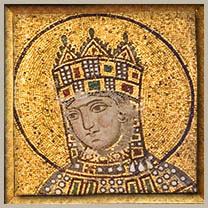
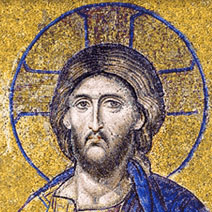



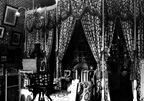 Imperial Bedroom
Imperial Bedroom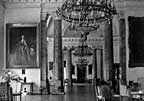 Portrait Hall
Portrait Hall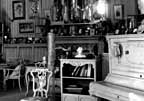 Mauve Room
Mauve Room Maple Room
Maple Room Aleksey's Bedroom
Aleksey's Bedroom Nicholas's Study
Nicholas's Study Aleksey's Playroom
Aleksey's Playroom Formal Reception
Formal Reception Balcony View
Balcony View Aleksey- Balcony
Aleksey- Balcony Children-Mauve
Children-Mauve Nicholas's Bathroom
Nicholas's Bathroom Alexandra- Mauve
Alexandra- Mauve Nicholas's Reception
Nicholas's Reception Tsarskoe Selo Map
Tsarskoe Selo Map